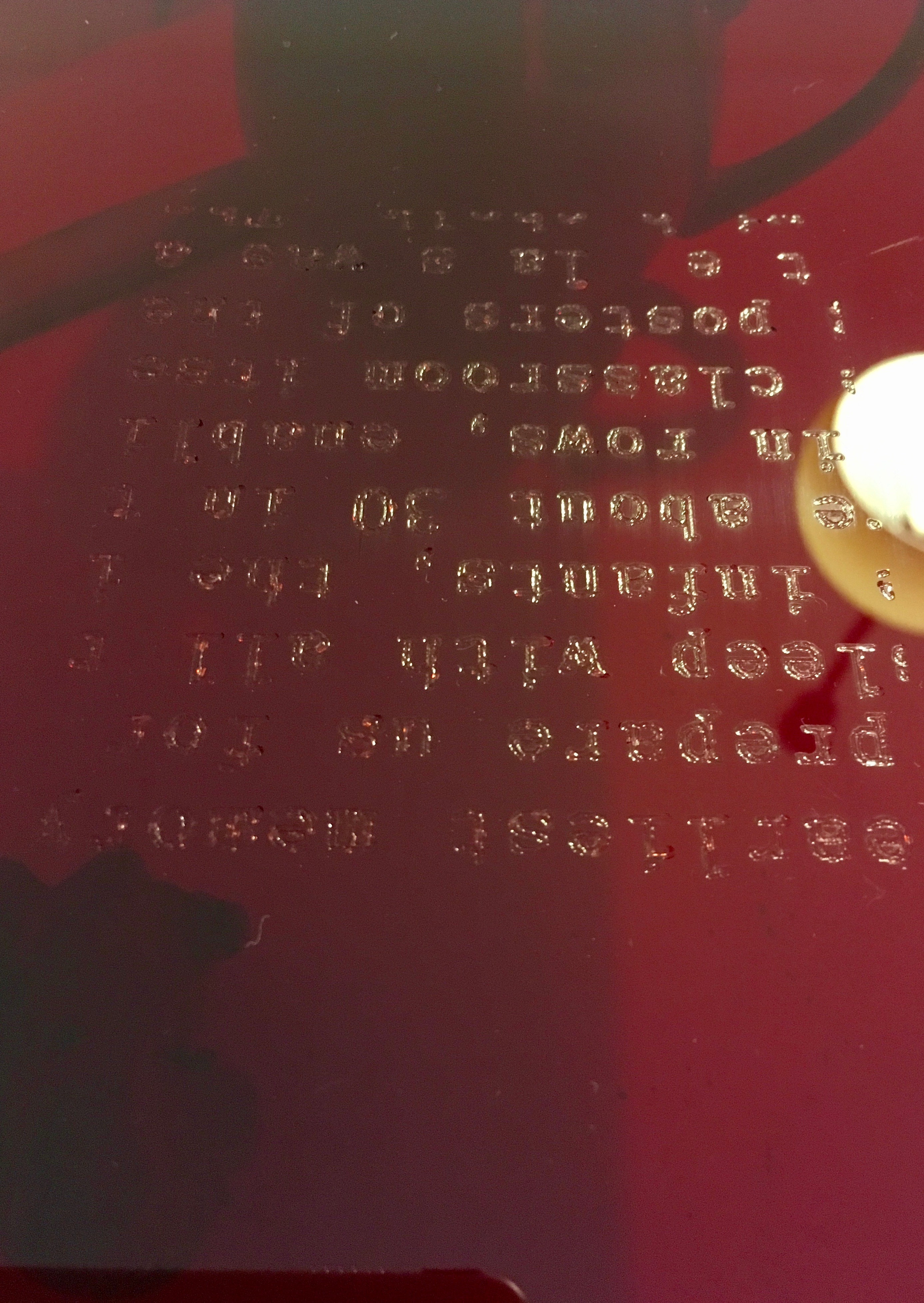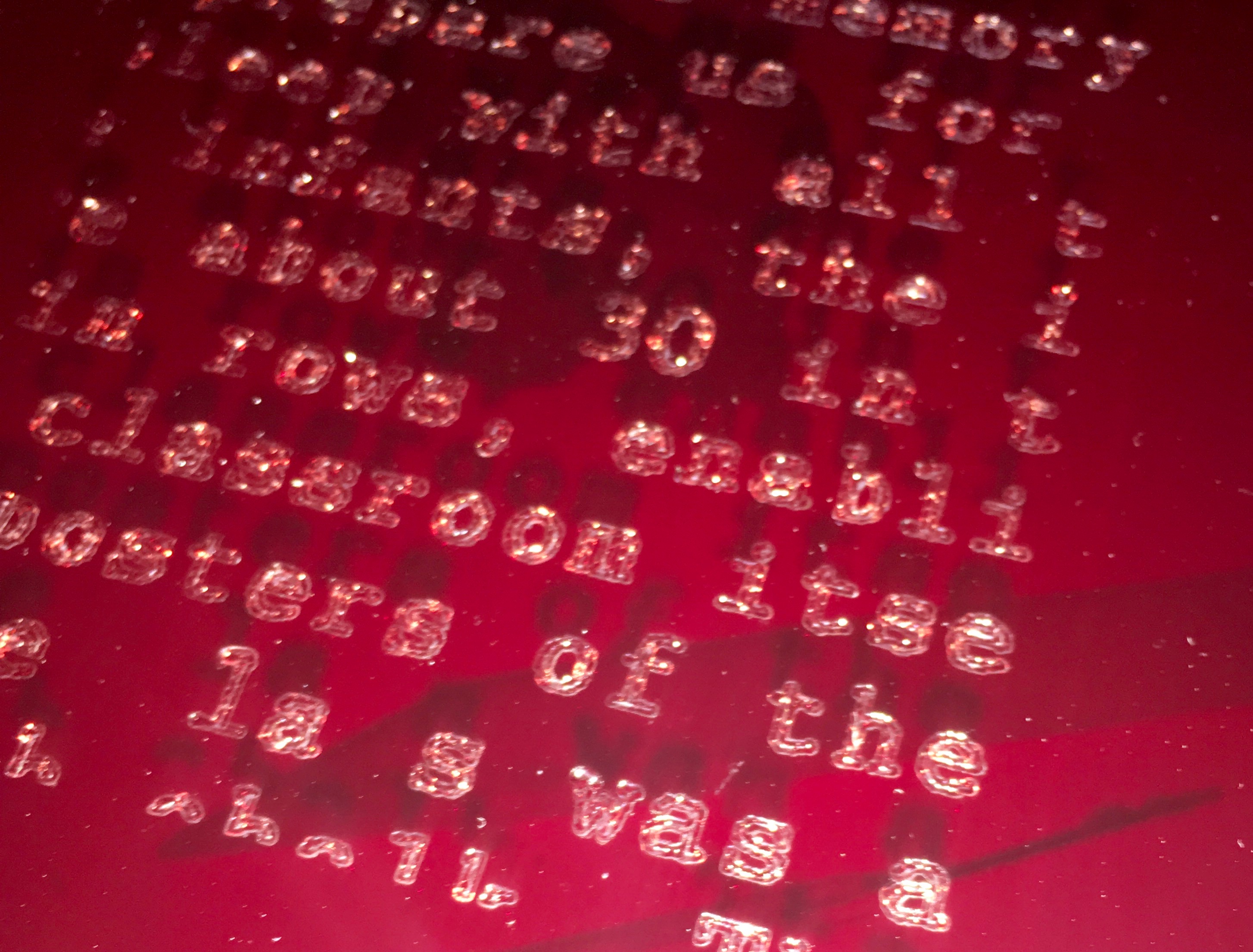I have floundered a little on the idea of producing a performative presentation for this assignment. Primarily this is because I would be unlikely use performance as a medium for my own practice and this association is uncomfortable. However in terms of how this may be useful to my practice it offers a method to ‘present’ my thinking in a way which does not involve me having to overcome the anxiety which I associate with presenting. It would also a simple format to communicate new content and ideas which are feeding in this year to my work.
Initially I thought that I could present a short film showing process of both painting and clay hand-building along with some still images. My work is process led and ideas and research are mostly found through this physical interaction and the thinking space which it creates. However I have given much thought recently to new content and ideas which will feed into the work aside from but not excluding the methods and research which I embarked on last year concerned with Intuition and the subconscious.
I found a performance lecture via the Tate website which provided inspiration:
OTOBONG NKANGA: PERFORMANCE LECTURE
Nkanga’s practice centres around the relationship we have with the environment, mapping out ways in which we have damaged land, as well as its dependent ecosystems and communities. Her multi-disciplinary practice includes performance, painting and poetry, as well as sound and voice. (MALATJIE, 2020)
Nkanga uses an interesting blend of images, poetry, movement, voice and breath, silence and comedy to convey the primary idea relating to the work and also other issues concerned with race and the commercial relationship with curators and galleries.
Speaking in the question and answer session towards the end of the event, Nkanga said of the performance lecture format: ‘It frees me’. She was able to follow the rules of a lecture that she wanted to follow, while discarding those that did not serve her purpose. She was able to move freely across the stage, throwing pieces of paper on the floor that she later picked up; she sang and hummed when it advanced her course better than speech; and she read a piece of fiction and some poetry to conclude the session. The evening successfully appealed both to those who might have had in-depth knowledge of Nkanga’s work and those less familiar with performance art. Nkanga brought her own personal story, humour and personality to the event, while keeping it intellectually and conceptually rigorous. The format also allowed the audience to benefit from hearing the artist speak about her work while witnessing aspects of the performative way in which the work is made manifest. Through the model of the performance lecture, we heard Nkanga’s voice, were engaged by her poetry, and listened to how she thinks with and through the land. (MALATJIE, 2020)
Ideas:
To produce a stop-frame or film of some kind which shows process ambiguously of making hollows and in wet clay? Possibly forming similar in oil paint.
- Images of studio, rooms, the work etc alongside words describing internal inter.
- Use of sound, breathing, music.
- Words from the fictional piece.
Nb: With no techy skills to put together edit etc and little access to means to do so. Links to Elements of presentation to be uploaded to blog as they are. Possibly to edit to a coherent piece at a later date.
See Links and Images Below:
https://spark.adobe.com/video/1xVlffV54tlML/embed
https://spark.adobe.com/video/GBg1e3yr2MQis/embed
https://spark.adobe.com/video/Qs7M5vCf9mEYx/embed
https://spark.adobe.com/video/fwtG7ufNwOVaY/embed
Bibliography
MALATJIE, P., 2020. Otobong Nkanga: Performance Lecture | Tate. [online] Tate. Available at: <https://www.tate.org.uk/research/research-centres/hyundai-tate-research-centre-transnational/event-report-otobong-nkanga-lecture> [Accessed 19 November 2020].



Recent Comments